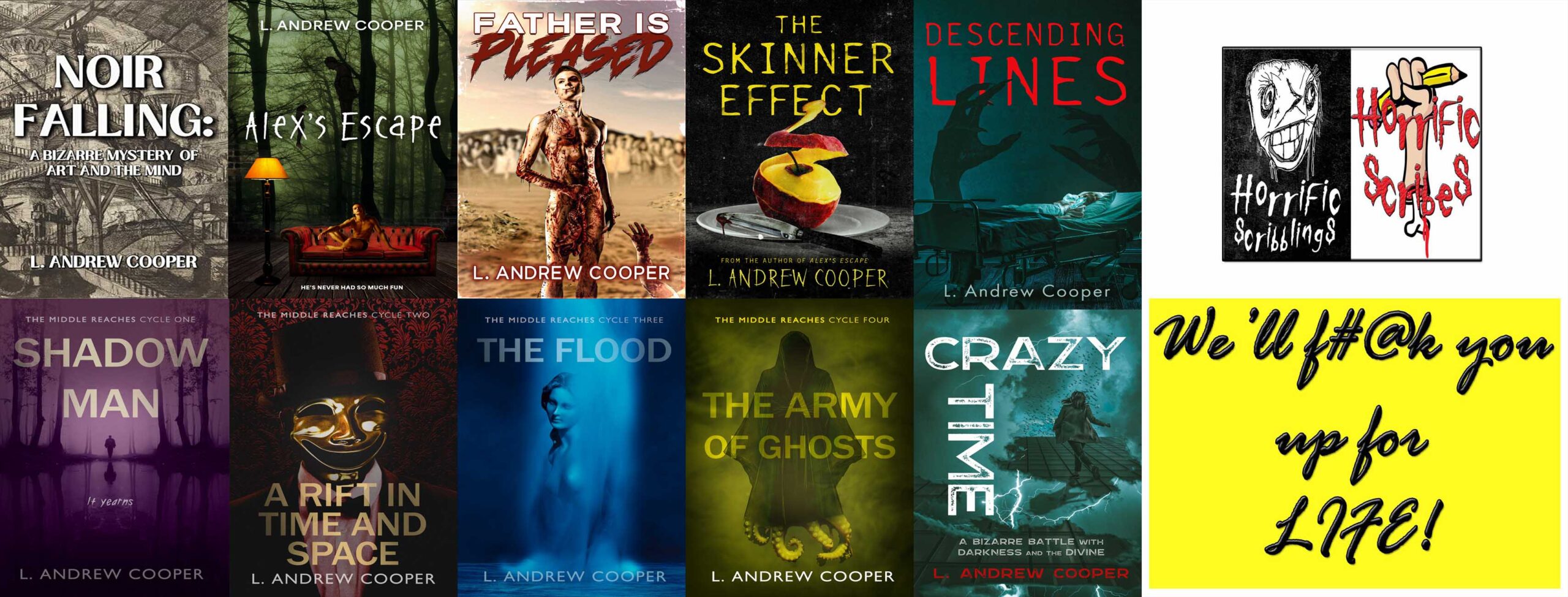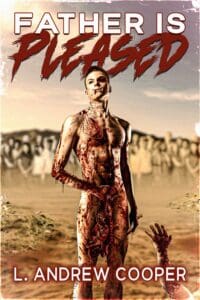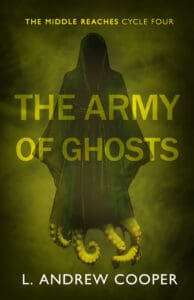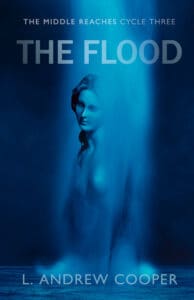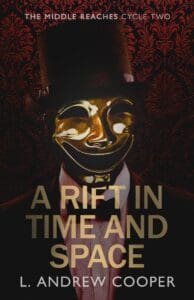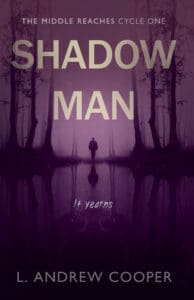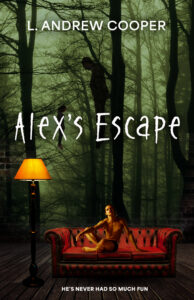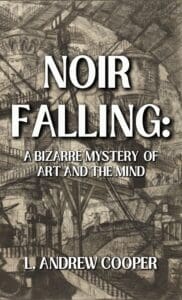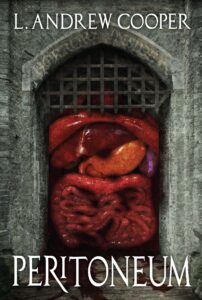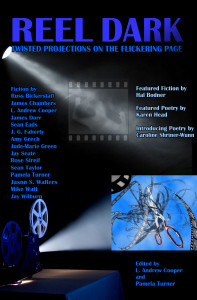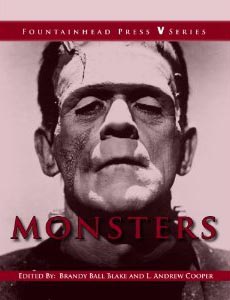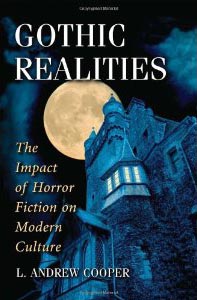Books
My fiction and non-fiction are of interest to general readers, fans of horror and dark fantasy, as well as students and academic researchers. Scroll down to learn more about Alex’s Escape, Noir Falling, The Middle Reaches, Records of the Hightower Massacre, Stains of Atrocity, Crazy Time, The Great Sonnet Plot, Peritoneum, Reel Dark, Imagination Reimagined, Leaping at Thorns, Descending Lines, Burning the Middle Ground, Dario Argento, Monsters, and Gothic Realities, or visit my Amazon.com author page , my Goodreads page, my Smashwords profile, or my Kirkus Pro Connect page. You can also learn more on the Links tab.
Descending Lines: Revised Second Edition

THE ONLY WAY OUT IS DOWN
Carter and Megan Anderson’s six-year-old daughter Caitlin is dying from bone cancer that has spread throughout her body. Medical science can’t save their little girl—but they know something that can. When they were in college, they discovered a book of rituals, The Alchemy of Will by Dr. Allen Fincher, that enables people to do almost anything when they combine the power of will with the right sacrifice. Carter and Megan can save Caitlin if they sacrifice their second-born. But Caitlin is an only child. How far would you go to save your child? They decide to get pregnant and begin nine months of hell, preparing for the unthinkable. Their urban apartment becomes a domestic nightmare as their relationship and sanity erode. The dark secrets of their past point toward a darker future, and as they get closer and closer to saving their daughter, they descend deeper and deeper into unimaginable horror.
The revised second edition of Descending Lines significantly expands and alters the first published edition, returning to the author’s original, more twisted vision of the story.
From ARC (advance review copy) readers:
“The whole book was unhinged in the best way possible.”
“I loved the author’s style and how he executed the narrative by issuing multiple POV. If you are a fan of Nat Cassidy, Eric LaRocca and Kristopher Triana, then I think this will be a book you will enjoy.”
“The author did an excellent job at creating a psychological understanding of the characters, and I was bought in from the beginning.”
Order Descending Lines on Amazon!
Crazy Time: A Bizarre Battle with Darkness and the Divine (2025)

WHAT IF OMNIPOTENT FORCES SOUGHT YOUR DESTRUCTION?
WHAT IF YOU COULD FIGHT BACK?
SECOND EDITION! On a dark urban highway, bright, introspective thirtysomething Lily Henshaw survives a brutal attack by men who announce that “It’s Crazy Time!” and kill her friends. Months later, still crushed by survivor’s guilt, Lily suffers another serious trauma—and another, and another, and another. Deaths, especially suicides, surround her, as do strange occurrences that, despite her agnosticism, seem to have Biblical import. She becomes convinced she is cursed like Job from the Bible, but unlike Job, she doesn’t assume God is the good guy. While intense stresses foster an unlikely romance with her boss, she goes on a quest for answers that involves a psychic, a Satanist, a Protestant preacher, and others, gaining resolve and a destination: the skyscraper where she might confront the supernatural forces aligned in a conspiracy to destroy her life.
“What would happen if the battle between the forces of good and evil became corporate? While navigating a series of tragedies that seem cherry-picked to destroy her, Lily Henshaw is about to find out. In a chaotic adventure that includes a scintillating cast of morally gray characters, L. Andrew Cooper takes us along for a weird, crazy ride as we bear witness to Lily’s trials and tribulations … and, ultimately, her fate. In equal parts thought-provoking and entertaining, Cooper will challenge what you thought you believed.” —Cassandra O’Sullivan Sachar, author of Darkness There but Something More and Keeper of Corpses
Order Crazy Time on Amazon!
The Skinner Effect (2025)

After university authorities observe a gruesome experiment that psychologist Dr. Stanley Burrows performs on rats, an experiment during which one of his graduate student assistants is injured, Dr. Burrows and his only loyal assistant, Edward Pine, accept exile from the academic world and embrace new supporters who want them to do different sorts of experiments on human subjects. Dr. Burrows has limitless resources to develop innovative processes for behavioral conditioning that achieve extreme outcomes. He programs his subjects with violence so they will commit violence. Spurred by conclusions drawn from the thinking of radical behaviorist B.F. Skinner, he will use his subjects to demonstrate not only the bloody extremes for which he can program a “human” but also a new understanding of “the human” susceptible to programming.
“The Skinner Effect by L. Andrew Cooper is not for the faint of heart… a complex psychological experiment wrapped in an extreme horror disguise… fans of extreme horror will love this book.” –JG Faherty, author of Hellrider and The Malthusian Correction
“This novella is 84 pages of pure blood-soaked madness… I loved how the characters changed… I enjoyed this one and will never look at a plate of meaty sauce the same way again! Be ready for the blood parade on this one!” –Christina Rangel Eleanor, The Voracious Gnome (Read the full review!)
“The Skinner Effect by L. Andrew Cooper is an enthralling and brutal tale of dark psychological experimentation gone horrifically as intended. Cooper’s use of language is absolutely exquisite. The combination of sophisticated writing and graphic brutality makes for immersive and impactful reading… a must-read for splatterpunk aficionados, especially those looking for something outside the norm.” –Lisa Lee Tone, Bibliophilia Templum (Read the full review!)
Order The Skinner Effect on Amazon!
Father Is Pleased (2025)
(available on Amazon)
After a bloody rite of passage, Felix becomes a True Son, one of Father’s chosen inner circle, someone with a special vantage on the secluded society of the Settlement of Passing in the Nothing Lands, where all brothers and sisters revere Father. Father is life, and Father is death, and Father governs rituals that guide his followers on their journeys to meet the void, as death is the greatest good and the only worthy desire. Felix witnesses and participates in many rituals: the violence and death linked to childbirth, the gut-ripping orgies that serve as theatre, the initiation of another young man in the art of sacrificing an outsider in a manner that will please Father, and more. Nothing pleases Felix like pleasing Father, and when Father takes notice, he points Felix toward a special destiny in the coming days when threats to their ways of honoring death will come from within.
“Father Is Pleased is a harrowing plunge into the very marrow of madness, delving into the society of a cult led by the titular Father. This story is intelligent and brutal, with prose and storytelling prowess that are as sharp as they are disturbing. We are forced as a reader to confront the terrifying ways in which ideology can replace identity and erode moral discretion. Even aside from the incredibly uncomfortable and horrifying scenes of violence, this novel left a deep and lasting impression: disturbing, intellectually provocative, and emotionally intense in a way that’s hard to shake.” — Megan Stockton, author of Lovely, Dark & Deep and Bluejay
“Cooper brings us a twisted novella with a mix of spice, violence, and depravity. A breath of fresh air for anyone in a reading slump. Father is definitely pleased!” —Jason Nickey, author of Rural Decay and Wreckage
The Middle Reaches, Cycle Four: The Army of Ghosts (2025)
(available on Amazon)
The Middle Reaches concludes with Cycle Four: The Army of Ghosts. As chaos and madness spread, gods, monsters, ghosts, and humans battle for the fates of both the earthly realm and the realms beyond.
Read the Alpha’s Court review!
*
*
*
*
The Middle Reaches, Cycle Three: The Flood (2025)
(available on Amazon)
In The Middle Reaches, Cycle Three: The Flood, new travelers collide with some familiar from earlier cycles as they all journey deeper into the horrors of Carcosa, exploring the roads to Lake Hali and the Palace of the King in Yellow. A lawsuit in the earthly realm over the ownership of the land between the two Acton Ways, the entryway to The Middle Reaches, manifests in Carcosa as a struggle among gods and ghosts, a struggle that could unleash an apocalyptic Flood.
Read the Alpha’s Court review!
*
*
The Middle Reaches, Cycle Two: A Rift in Time and Space (2025)
(available on Amazon)
The Middle Reaches, Cycle Two: A Rift in Time and Space introduces Bobby Lightfoot, a boy lost in The Middle Reaches and tormented by a fiend called The Man in the Grinning Mask. Heather, Bobby’s former babysitter, and her friend Janet are lured into The Middle Reaches by Max, a charming young man with secrets. Stalked by psychopaths as well as the region’s many other monsters, these travelers follow paths that cross Cycle One’s, and they go farther and deeper into the darkness of The Middle Reaches and places beyond the Gate.
Read the Alpha’s Court review!
*
The Middle Reaches, Cycle One: Shadow Man (2025)
(available on Amazon)
The Middle Reaches, an epic of horror and dark fantasy, begins with Cycle One: Shadow Man. When five friends reunite to seek the truth about the otherworldly place where their high school friend, Sheldon, disappeared more than a decade earlier, they journey into a dark realm of sex, violence, and creatures hungry to keep them forever.
“A tale of dark dreams & sharp teeth, L. Andrew Cooper pens a story here that unravels slowly and sweetly, leaving scars imprinted on the reader’s brain.” – Jeremy Megargee, author of Soulmates, Crown of Carrion, and Old Hollow
“L. Andrew Cooper has a knack for writing viscerally, but not just grotesque nor physical viscera on display. Every time I read his work it crawls into my psyche. And that’s where the visceral stuff happens. He makes me feel things that are unfeelable and believe things that are unbelievable and experience things that are unexperienceable. It’s that knack for making nightmares feel like dreams without ever losing their edge. I say knack instead of craft or talent because by God if it was something I could learn how to do I’d be doing it already. I think it crawls out of his heart and his brain somewhere and just spills onto the paper.” – Sean Taylor, author of Show Me a Hero and A Crowd in Babylon
Read the Alpha’s Court review!
Alex’s Escape (2025)
(available on Amazon)
Fourteen-year-old psychopath Alex Packard has his own house, a shadow version of his parents’ house that THEY helped him build. He takes people there to kill them in the most entertaining ways he can imagine. After murdering his parents, he moves to Los Angeles to live with his married gay uncles, Bruce and Aaron. Alex bonds with his uncles immediately, coming out as gay, too. His bond with Aaron, a documentary filmmaker, tightens as he shares in Aaron’s passion for the camera, and he toys with both uncles, trying to ignite other passions. Meanwhile, he starts bringing beautiful boys and girls from school back to his house, staging more and more elaborate and violent scenarios with them to entertain himself as well as THEM… but his uncles have suspicions, and Alex leaves clues… and Alex might not understand the enormity of the forces that allow him to slaughter innocents in a shadow world.
“Alex’s Escape is pitch-black coming-of-age nastiness that delights in every transgression a hardcore horror fan could dream… and several more besides!” —Ryan Harding, Splatterpunk Award-winning author of Transcendental Mutilation and Genital Grinder
“A queer phantasmagoria of torturous horror, taboo sex, and supernatural cruelty. Alex’s Escape penetrates deep — in all manner of ways.” —Jonathan Butcher, author of What Good Girls Do and co-author of Motel Styx
“The most twisted and disturbing book I’ve ever read, in the vein of Barker’s best.” —David-Jack Fletcher, award-winning author of Raven’s Creek
Noir Falling (2025)
(available on Amazon)
Daniel Lowe, a presence but not a student at the prestigious University, keeps finding himself in strange situations, not sure how he got there. Color whorls devour people and places, a beautiful woman in a null space called The Blank asks him to save her from her corporate magnate husband, and dozens of missing students might somehow relate to these calamities. With companions such as Chuck Adair, a member of a philosophical Society that crams his head full of big ideas early on, and Voice, a young woman sprung from his head, he traverses hallucinatory landscapes, the interiors of famous paintings, and more on his quest to figure out where a growing mass of “clues” will lead.
Noir Falling blends surrealism with dark noir, dark fantasy, horror, and philosophical speculation, taking Daniel on a wild quest to find out who he is while he tries to save an irresistible femme fatale from an international corporate conspiracy to traffic in the “substance” of art and humanity.
“Noir Falling is a fever dream of philosophical quandaries, wrapped in delicious writing that kept me eagerly reading until the last page. Brilliant.” – M Ennenbach, author of Cuckoo
“I really enjoyed L. Andrew Cooper’s new novel! Mix a fast-paced adventure with elements of cosmic horror, spice it up with memorable characters and great humor, then serve it with a glass of the finest art history, philosophy, and aesthetic theory and you get the gourmet literary meal that is NOIR FALLING. Cooper masterfully mixes the intellectual with the bizarre in ways that are thought provoking while never slowing down the action. I loved the book and kept thinking it would make a great film or television series.” – Kendall Phillips, author of Projected Fears: Horror Films and American Culture
Records of the Hightower Massacre [with Maeva Wunn] (2024)
(available as an e-book, paperback, and even an audiobook narrated by Charles S. King via Amazon!)
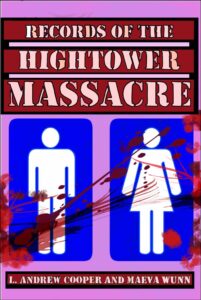
THEY WILL CORRECT YOU… ONE WAY OR ANOTHER.
HC3, the Hightower Course Correction Center, “recruits” LGBTQ+ people to participate in a program that will help them get the jobs they need to survive in the dystopic conditions of AMCONS City, center of a post-American territory run by a fascistic military. All they have to do is adopt cisgender, heterosexual identities. Ash, who is black, non-binary, and asexual, meets Aubrey, a white, trans, gay man, at a job fair where they face rejection after rejection… until they get recruited. They wind up in a converted slaughterhouse where the people in charge use brutal conditioning methods as well as the ghastliest forms of torture and murder imaginable to “help” newly recruited prisoners.
#1 Amazon bestselling horror writer L. Andrew Cooper and superlative dark poet Maeva Wunn team up to deliver a fast-paced, horrific ride into the depths of human depravity as Ash and Aubrey tell their tale. While the terrors are intense, characters propel the story: Ash and Aubrey form a core of friends within the program who resist and, eventually, learn to fight back.
Stains of Atrocity: Twenty Tales of Horror and Dark Fantasy (2023)
(out of print)
The twenty horrific tales in Stains of Atrocity vary in style and extremity, but each aims to leave an unusual, dark, and lasting stain on your psyche. It begins with “Silence,” a surreal haunting about a woman who visits and strange house and then quietly loses the people closest to her. It ends with “Mandy Schneider Makes Friends,” a taboo-breaking account of three psychopaths who form an alliance and then torture a group of campers and their chaperones. The stories share fascinations with the macabre and the grotesque, as well as with storytelling that defies the typical. While some possess a twisted sense of humor, all seek to disturb. Get comfortable. It won’t last. For a list of stories with comments, see this post.
Crazy Time: A Bizarre Battle with Darkness and the Divine (2022)
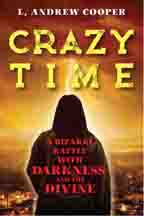
What if God is out to get you? Lily Henshaw, an agnostic, suffers from increasingly bizarre traumatic events that convince her she’s in a crossfire between God and Satan reminiscent of the Book of Job. She doesn’t take sides: preparing to confront even the Almighty, she follows psychics, Satanists, preachers, and corporate executives toward an apocalyptic showdown.
*
*
*
*
*
The Great Sonnet Plot of Anton Tick (2018)
(available in paperback via Amazon, or via Horrific Scribblings)
The Great Sonnet Plot of Anton Tick presents one hundred sonnets in varying styles in which the speaker sits stranded on his sofa, a victim of both television doldrums and Irv, an alien anxiety-monster. Cara Carani, a flying superhero, would help him and others fight their Irvs, but Anton Tick, a scheming villain, captures the speaker and perpetrates a series of Irv-ous horrors that would spread throughout American culture. Combining introspection with narrative, the sonnets reflect on contemporary and classical media as Cara and Anton do battle for both the speaker’s future and the future of the world, futures in jeopardy while Anton’s Plot brings millions under his power.
Peritoneum (2016)
(out of print)
Snaking through history-from the early-1900s cannibal axe-murderer of “Blood and Feathers,” to the monster hunting on the 1943 Pacific front in “Year of the Wolf,” through the files of J. Edgar Hoover for an “Interview with ‘Oscar, ‘” and into “The Broom Closet Where Everything Dies” for a finale in the year 2050-Peritoneum winds up your guts to assault your brain. Hallucinatory experiences redefine nightmare in “Patrick’s Luck” and “The Eternal Recurrence of Suburban Abortion.” Strange visions of colors and insects spill through the basements of hospitals and houses, especially the basement that provides the title for “TR4B,” which causes visitors to suffer from “Door Poison.” Settings, characters, and details recur not only in these tales but throughout Peritoneum, connecting all its stories in oblique but organic ways. Freud, borrowing from Virgil, promised to unlock dreams not by bending higher powers but by moving infernal regions. Welcome to a vivisection. Come dream with the insides.
Reel Dark (2015/2016)
(out of print, but copies available via Horrific Scribblings)
Welcome to a macabre cinema for the imagination, to screenings of twisted tales projected not on a movie screen but on the page.
In Reel Dark you’ll find stories and poems by authors ranging from new voices to bestsellers to Bram Stoker Award finalists. Genres inside include suspense, horror, science fiction, and fantasy. You’ll meet Baby Jane as you never imagined her, a lone deputy whose pursuit of justice conjures a darker and wilder West, a director who puts FAR too much of himself into his film, a young woman haunted by a stranger who warns her of a demise linked to the cinema, and an aging actress who may have been too good at her roles.
Where lines between reality and fantasy blur, where frames flicker at 24 frames per second, we catch a glimpse of strangers’ dreams and nightmares. As David Lynch puts it, “This whole world is wild at heart and weird on top.”
As Karen Head writes in her poem responding to Lynch, “In the movies / everything is illusion.” But in a world with cameras everywhere, how do you know whether you’re in a movie?
Imagination Reimagined (2014) [edited with Georgia L. Jones and Christopher Kokoski]
(out of print, but copies available via Horrific Scribblings)
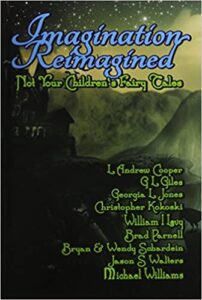
Reimagine the fairy tales of your youth through nine of the most creative authors writing today! See Rose Red and Snow White through the eyes of Jason S. Walters in an intriguing new telling of the age old tale. Feel the bone-chilling “Kindertotenlieder” by horror writer L. Andrew Cooper. Have you wondered what happens “After Ever?” Experience a vision from the brilliant writing of William I. Levy. Come back to reality for a moment in a crime thriller by Christopher Kokoski that will leave you in awe, scratching the “Hair of Your Chinny-Chin-Chin.” The Ugly Duckling will never look quite the same after reading “Free to Be Donnie Kinnaird” by the astonishing Michael Williams. The Big Bad Wolf comes alive in the Brad Parnell’s “The Girl in the Red Hood.” Go on the adventure of Hans and Grace through the unique styling of Georgia L. Jones. Wish yourself into another dimension with “Genie in the Bottle” by Bryan and Wendy Schardein. These boots are made for walking into an unusual realm in the graceful musings of “Puss in Boots” by G. L. Giles. Whether your favorite is a fairy tale by Robert Browning, the Grimm Brothers, Giovanni Francesco Straparola, or Hans Christian Andersen, you are sure to have your imagination run wild with each story in Imagination Reimagined.
Leaping at Thorns (2014/2016)
(out of print, but copies available via Horrific Scribblings)
Leaping at Thorns: Fifteen Disjointed Impalements arranges 15 of L. Andrew Cooper’s experimental short horror stories into a “triptych” of themes–complicity, entrapment, and conspiracy–elements that run throughout the collection.
The stories span from the emotionally-centered and violence-mild “Last Move,” about a mother and son whose cross-country move might be complicated by a haunted U-Move truck, to the almost unthinkably horrific “Charlie Mirren and His Mother,” also about a mother and son, but their lives take a turn that might be traumatic for readers as well. While “Worm Would” offers a psychosexual fantasia on the sheer grossness that is a flatworm, “Tapestry” uses absurd, sometimes comic violence to take Jessica, the young professional protagonist, into a political nightmare. The absurd reaches dark extremes in “Lachrymosa,” a story of almost pure hallucination, and stretches back toward the comic in the brain-and-tongue-twister “Heart on a Stick.” The ‘conspiracy’ panel of the triptych, from “The Fate of Doctor Fincher” to “The Special One,” is a series of standalone stories that each adds important details to the fictional world and grand scheme of Dr. Allen Fincher, who also lurks in the background of Cooper’s novels Burning the Middle Ground and Descending Lines.
For early critical responses, see this post from Andrew’s blog.
Descending Lines (2014)
(first edition out of print, but copies available via Horrific Scribblings)
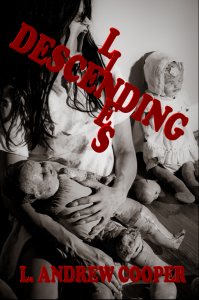 When Megan met Carter Anderson at Harvard, their college romance took a mystical turn thanks to The Alchemy of Will, a book by Dr. Allen Fincher that gave them the power to do almost anything, but with disastrous results. Years later, their six-year-old daughter, Caitlin, is dying a slow death from bone cancer. Dr. Fincher’s book offers them a cure: they can save the life of their first-born by sacrificing the life of their second. But Megan and Carter don’t have a second-born… yet. Only half-convinced, Megan, confined to their New York apartment, begins nine months of hell, and she and Carter enter a spiral that consumes more lives than they could have ever conceived. Ranging from domestic terror to all-out supernatural horror that flecks the American east coast with mangled bodies, Descending Lines takes a gut-wrenching question–how far would you go to save your child?–and turns it into a fast-paced journey to places where even nightmares fear to tread. Descending Lines: The only way out is down.
When Megan met Carter Anderson at Harvard, their college romance took a mystical turn thanks to The Alchemy of Will, a book by Dr. Allen Fincher that gave them the power to do almost anything, but with disastrous results. Years later, their six-year-old daughter, Caitlin, is dying a slow death from bone cancer. Dr. Fincher’s book offers them a cure: they can save the life of their first-born by sacrificing the life of their second. But Megan and Carter don’t have a second-born… yet. Only half-convinced, Megan, confined to their New York apartment, begins nine months of hell, and she and Carter enter a spiral that consumes more lives than they could have ever conceived. Ranging from domestic terror to all-out supernatural horror that flecks the American east coast with mangled bodies, Descending Lines takes a gut-wrenching question–how far would you go to save your child?–and turns it into a fast-paced journey to places where even nightmares fear to tread. Descending Lines: The only way out is down.
Burning the Middle Ground (2012)
(first edition out of print, but copies available via Horrific Scribblings)
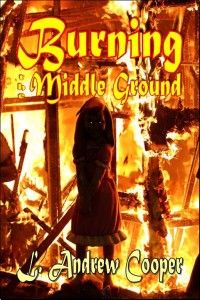 Burning the Middle Ground mixes horror and dark fantasy in a tale of a small Southern town torn apart by a supernatural conspiracy. Five years after tragic murders divide Kenning, Georgia along religious lines, Ronald Glassner, a web journalist from New York, arrives to write a book about the tragedy’s sole survivor, Brian McCullough. Homicidal house pets, enucleated corpses, and menacing apparitions soon help Ronald understand that there’s something much bigger going on in Kenning, something connected to the town’s First Church and the imposing Reverend Michael Cox. With Brian, Brian’s girlfriend Melanie Grayson, progressive preacher Jeanne Harper, and police officer Winston Beecher, Ronald embarks on an investigation that takes them all into a nightmarish plot that will change the entire country.
Burning the Middle Ground mixes horror and dark fantasy in a tale of a small Southern town torn apart by a supernatural conspiracy. Five years after tragic murders divide Kenning, Georgia along religious lines, Ronald Glassner, a web journalist from New York, arrives to write a book about the tragedy’s sole survivor, Brian McCullough. Homicidal house pets, enucleated corpses, and menacing apparitions soon help Ronald understand that there’s something much bigger going on in Kenning, something connected to the town’s First Church and the imposing Reverend Michael Cox. With Brian, Brian’s girlfriend Melanie Grayson, progressive preacher Jeanne Harper, and police officer Winston Beecher, Ronald embarks on an investigation that takes them all into a nightmarish plot that will change the entire country.
Dario Argento (2012)
(available from Amazon and the University of Illinois Press]
Dario Argento examines the major works of the Italian maestro of horror, from Bird with the Crystal Plumage (1970) to Giallo (2009). Together, his oeuvre mounts a major attack on preconceptions about film’s form and meaning, raising challenges against the norms of feminist criticism, Freudian psychoanalysis, narrative coherence, and conventional consistency. The book also includes a detailed filmography of Argento’s directorial features and two newly translated interviews. After publication, Cooper and Argento sat down to catch up on Argento’s work since the book’s release, and that interview is on the website of the University of Illinois Press.
Monsters (2012) [edited with Brandy Ball Blake]
(available from Amazon)
Monsters is a reader that assembles some of history’s most famous ghouls and goblins into a single volume, introducing selections from classic texts such as Dracula and Frankenstein alongside examinations of more contemporary horror films like American Werewolf in London, Candyman, Child’s Play, Psycho, and Halloween. Non-fiction selections by literary and film critics broaden the terms for discussing these texts while gesturing toward the larger cross-cultural, cross-historical phenomenon of monstrosity, which carries meanings and performs social functions that determine who we are and what we fear. While the book may interest even casual readers, it is designed primarily as a textbook for first-year college writing classes; questions and assignments after each selection direct readers to explore monstrosity through exercises that might be as fun as they are enlightening.
Gothic Realities: The Impact of Horror Fiction on Modern Culture (2010)
(available from Amazon and McFarland Publishing]
Gothic Realities asks whether and how eighteenth-century literary critics could have been right in their condemnations of Gothic horror for corrupting the young, creating deviant sexualities, encouraging heretical beliefs, and fomenting anti-social violence. In a sense, they were right: the Gothic played formative roles in the scientific creations of homo- and hetero-sexuality in the nineteenth century, and it provided the means for articulating and even perceiving “real” ghosts. It also played an undeniable role in the tragic school shootings at Columbine High School and Virginia Tech. While the Gothic’s entanglement with these historical events is undeniable, the blame for the events lies elsewhere, a point that receives its most eloquent articulation within some of the Gothic’s most controversial works.
